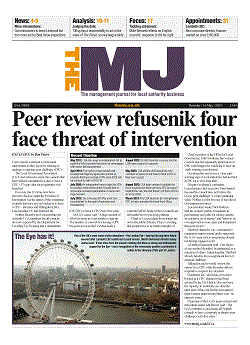Air pollution has cut short the lives of nearly 10,000 Londoners. It costs the NHS up to 3.7 billion a year and exacerbates existing inequalities due to exposure to toxic air and damage to health. Air pollution does not stand apart from other public health issues - it is woven into the very fabric of London and the choices of our city’s nine million residents. That is why a holistic approach is needed to tackle this urgent public health issue.
To put this into practice, the London Environment Directors Network and the Association of Directors of Public Health in London have produced a wide-ranging joint position on how to clean up London’s air, launched in the run-up to London Car Free Day on Sunday 22 September.
Our joint position is based on evidence from Public Health England on effective interventions, such as air pollution data and real impacts on public health. Drawing on the expertise of both sets of Directors, we have taken care to create recommendations that are operationally feasible.
Restricting car use and incentivising people to travel in more sustainable ways are some of the most effective measures we can take to clean up London’s air. There is strong evidence that this improves air quality and public health outcomes locally. This is why we’re delighted to be celebrating the largest-ever Car Free Day in London on Sunday 22nd September. In London, two thirds of boroughs are supporting play streets for Car Free Day - more than 100 street closures are planned, as well as a host of community festivals, bike surgeries, picnics and free treats for participants.
We recognise that some people and families really need a car, but we suggest that it is possible for almost everyone to reduce car use. Doing so has tremendous benefits. Not only does it diminish dangerous levels of air pollution, but it also improves the health and fitness of individuals who take up walking or cycling instead.
Beyond 22nd September, we support London-wide measures including the Ultra Low Emissions Zone and the introduction of locally appropriate measures such as restricted and emissions-based parking, low emissions zones and building better walking and cycling infrastructure. We also welcome the 24 climate emergency motions that have been passed in various London boroughs this year and support all boroughs who are setting and stretching new targets for emissions reductions.
Climate change and air pollution are challenges that individuals, councils and businesses can, and should, take action to address. But central government leadership and funding is also fundamental. That is why we’re calling for 2.5% of the UK’s GDP to be spent on climate change and air quality, based on a recommendation of the Intergovernmental Panel on Climate Change.
Long-term investment on this scale would demonstrate that we are global leaders when it comes to protecting the environment. This would unleash enormous public health and environmental co-benefits, including creating less pollution and increasing active travel and green infrastructure. Amongst many other options for funding, we would like to see the government supporting a national scrappage scheme for diesel vehicles.
In the face of the growing threat air pollution poses to our residents’ health and wellbeing, we have to work together, within and across councils, to champion the measures that work, focussing on the most vulnerable members of the population: low-income communities, children, older people and those already suffering from respiratory ailments.
Initiatives like the Healthy Streets Approach in London can help to create safer streets that support active travel. However, we also need to address pollution hotspots – particularly those around schools – and provide more targeted information that can help vulnerable groups to protect themselves on high pollution days.
If we are to have a meaningful conversation with local communities and businesses about reducing air pollution, we need to get our own house in order. This is why we’ll be working together to support boroughs and NHS vehicle fleets to move faster towards ultra-low and zero emissions vehicle fleets. This is part of our broader commitment to using public sector procurement and social value action to reduce our own contribution to air pollution, which is a testament to our ability to speak with one voice as boroughs.
It is important to recognise that tackling poor air quality is everyone’s business, and that we all play a vital part: national agencies, local public services and Londoners themselves. We must therefore help our residents and businesses to understand the issue, its links to inequality and climate change, and how they can change their behaviour to make a positive difference.
Our joint position on air quality is the first of what we hope will be many collaborations between the London Environment Directors Network and the Association of Directors of Public Health in London. We look forward to seeing how London boroughs use this blueprint to create better and healthier lives for our residents.
Stephen Evans is air quality lead, London Environment Directors’ Network, and Dr Tamara Djuretic is air quality lead, Association of Directors of Public Health – London


